The classic American steakhouse— where an abundance of white linen, polished mahogany and brass create a comforting, masculine ambiance — is today more nostalgia than reality. Contemporary steakhouses now dominate the genre, where in addition to sleek modern décor, slabs of USDA Prime are being traded in for petite cuts of Japanese wagyu beef priced like jewelry.
The steakhouse, a quintessentially American dining tradition, continues a robust renaissance that began more than a decade ago. The classics — places like Sparks, and Smith & Wollensky in New York City or Gibsons in Chicago — remain popular, but talented young chefs are reinterpreting the venerable institution for a more sophisticated, diverse clientele. The traditional ribeye is still on the menu, but the days of pairing it with a baked potato and creamed spinach are fading in favor of caviar, truffles and some molecular gastronomic magic.
One of the first steakhouses to break with tradition and introduce diners to a new wave of contemporary beef palaces was Beverly Hills’ CUT, the Wolfgang Puck concept that has since been replicated in Las Vegas, New York, Singapore, London, and even Bahrain. The original Beverly Hills dining room, an über-sleek space incongruously carved out of the ornate, Italian Renaissance-style Beverly Wilshire Hotel, broke all the rules.
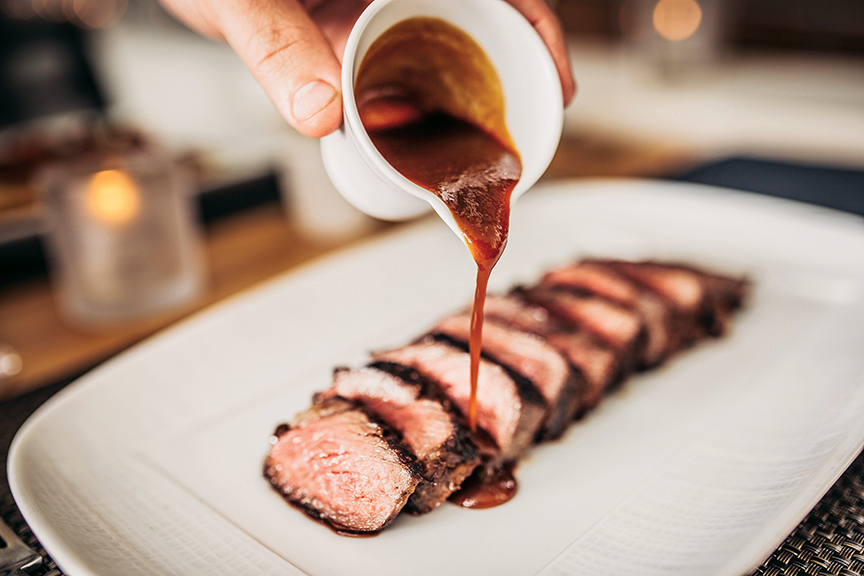
When CUT debuted a decade ago, it was a bold departure from the traditional steakhouse, from the cutting-edge aesthetic by famed modernist architect Richard Meier to a menu that included beef from around the globe and subtle Pacific Rim influences. Unlike the traditional chophouses, it did not ooze testosterone, and tables were just as likely to accommodate svelte models as button-down businessmen. CUT was among the first mainstream steakhouses to offer genuine Kobe beef, so heavily marbled from a pampered existence that just a few ounces satisfy.
“Our chefs are constantly challenging themselves, using ingredients and techniques that most steakhouses would never think to implement,” says Head Chef Ari Rosenson. While that may be reflected in dishes like bone marrow flan and maple-glazed pork belly with sesame-orange dressing, the chef points out that familiar items like creamed spinach, Kennebec fries and tempura onion rings are among the most popular sides. “We continue to evolve, creating experiences that are tailored to our guests, while also keeping it playful, unpredictable and true to our brand,” states Rosenson.
In Northern California, Alexander’s Steakhouse has emerged as a counterpoint to old school chophouses like San Francisco’s John’s Grill and Alfred’s. According to Vice President of Operations Josh Rousseu, the layering of innovative Pacific Rim influences over the traditional steakhouse template is driven by changing demographics, partially due to the region’s tech boom. “The inspiration for Alexander’s was rooted in the love and popularity of the classic American steakhouse, but elevated by Asian influences, ingredients and techniques to create a meld between the comfortable, accessible familiarity and unexpected surprises,” explains Rousseu.
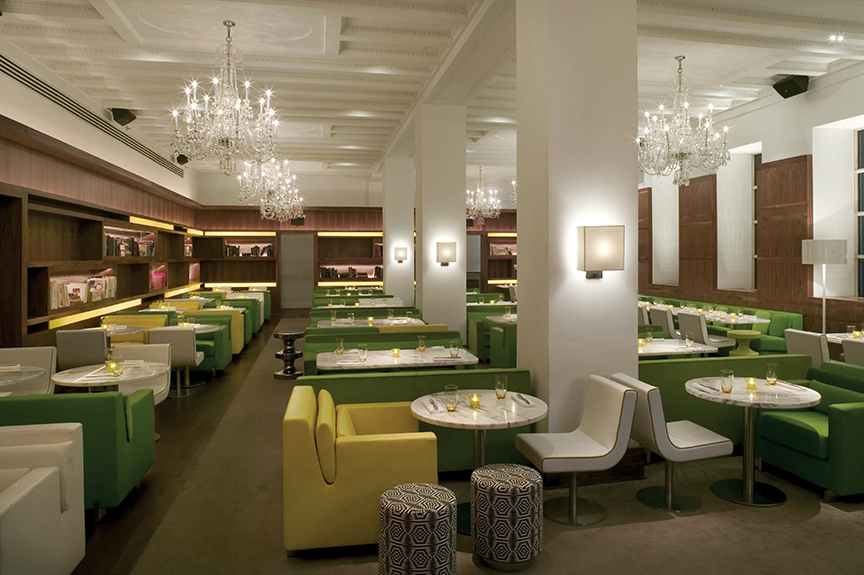
After launching in the Silicon Valley, Alexander’s next took over a former ware-house in San Francisco’s South of Market (SoMa) district, transforming it into a chic, contemporary space. Loyalists of old school steakhouses may be disappointed at the absence of an iceberg lettuce wedge or shrimp cocktail, but uni-oxtail toast and cured foie gras with blackberry honey and elderflower introduce sophisticated Japanese and French influences.
Steaks representing a wide array of appellations are offered at Alexander’s, from the American Heartland’s Black Angus to the “snow beef” wagyu raised in Hokkaido (Japan’s northernmost island), where cattle eat voraciously to combat frigid temperatures. Although most imported wagyu is incredibly rich and requires minimal seasoning, a selection of six exotic salts are provided.
Not all prized beef is from the Pacific Rim, and Long Beach, California’s Chianina is named after a legendary breed of cattle that Italians insist rivals the best of Japan or the American Midwest. For an opening act, diners may select from beef tartare, pork belly or roasted bone marrow with onion marmalade. The cuts of Chianina include bone-in ribeye, bone-in New York or bistecca alla fiorentina, and prestigious Piedmontese beef is also offered. The restaurant, a modern, approachable environment, features a strong wine program that is naturally deep in Italian reds but global in scope.
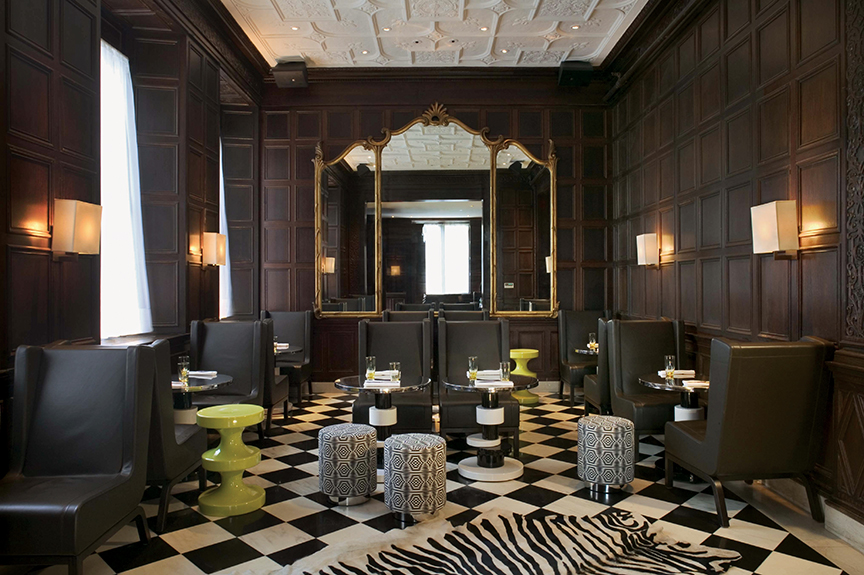
Prolific restaurateur Stephen Starr maintains a portfolio of about 30 diverse restaurants in the Northeast and Florida, including those of celebrity chefs Masaharu Morimoto and Douglas Rodriguez. Philadelphia’s Barclay Prime, with its chic, colorful décor — Baccarat crystal chandeliers are concessions to its historic Rittenhouse Square building — and contemporary soundtrack, has been called the “anti-steakhouse steakhouse.”
Executive Chef Mark Twersky’s menu includes some fun, whimsical items in addition to the requisite filet mignon and porterhouse, such as a monstrous 50-ounce tomahawk ribeye from Pennsylvania’s Baer Country Farm and Barclay Prime’s elevated riff on the iconic Philly cheesesteak. The $120 sandwich, which includes a half-bottle of Perrier-Jouët Champagne, is crafted from Japanese wagyu ribeye, foie gras and truffled Cheez Whiz. General Manager Tom Austin reports, “We’re filled with tradition and history in our own right, but stand in stark contrast to the old school classic steakhouse.”
Las Vegas has arguably become the steakhouse capital of America, with favorites from the Big Apple, Windy City and Lone Star State represented, as well as beef palaces created by celebrity chefs Mario Batali, Gordon Ramsay, and Jean-Georges Vongerichten. Top Chef star Tom Colicchio operates two steakhouses on the Strip: Heritage Steak, where beef from around the globe is grilled over an open flame, and Craftsteak, a sophisticated bastion of premium beef from the Heartland and Japan.
Colicchio is not one to overthink his cuisine. “My goal at Craftsteak is to find remarkable ingredients and cook in a way that preserves their integrity,” he says, adding, “It’s an amazingly simple idea.”
His Craftsteak menu includes braised, grilled and roasted cuts of beef, from USDA Prime to wagyu designated A5, the highest grade applied to the finest beef from Japan, complemented by a wine list filled with legendary (and stratospherically priced) vintages from Bordeaux. General Manager Christopher Goss reports the restaurant’s large menu offers opportunities for sharing and customizing. Despite the high prices, he insists, “We’re approachable to everyone, and while the cuisine may be an art, it’s not too highbrow and stands the test of time.”
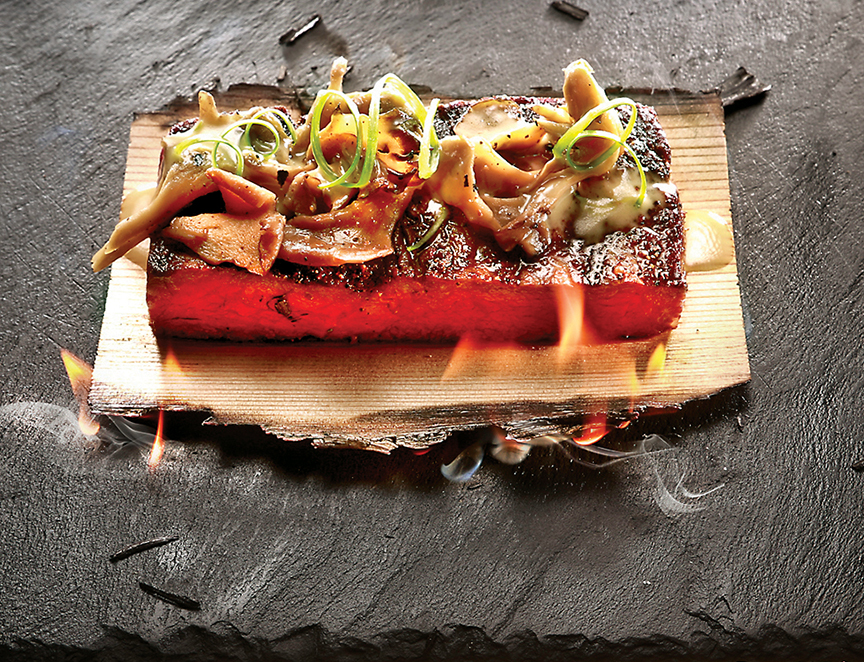
José Andrés, the Spanish-born celebrity chef who dominates the Washington, D.C., food scene, has stepped into the steakhouse arena at the trendy SLS Las Vegas. At his Bazaar Meat, he shows off some of the molecular gastronomic innovations he is famous for — tricks learned from his mentor, Spain’s pioneering chef Ferran Adrià — but he also respects the traditions of the American steakhouse.
In a chic environment created by groundbreaking designer Philippe Starck, Bazaar Meat is a modern, fanciful take on the traditional hunting lodge. Diners begin with Andrés signatures like foie gras cotton candy, otherworldly spherified olives and (literally) smoking liquid nitrogen cocktails, all reminders this ain’t your granddad’s steakhouse. Appetizers like beef tartare or bison carpaccio tacos reflect the meat-centric spirit, but the restaurant also offers an impressive raw bar from which oysters, sea urchin and live scallops are dispensed. And for high rollers, flights of caviar from around the globe can be paired with world-class Champagnes.
The steaks at Bazaar Meat include A5 Kobe from Japan’s Hyogo prefecture listed at $50 per ounce, prices equivalent to French black truffles. It is, however, worth noting that a few ounces of this ultra-rich, melt-on-your-tongue beef goes a long way and is best reserved for special occasions. Representing more bang for the buck is a whole, crackly-skinned suckling pig (a nod to the chef’s Spanish heritage), which can be pre-ordered for a memorable feast of what Andrés calls “the heart and soul of Bazaar Meat.”
Photos courtesy of Starr Restaurants


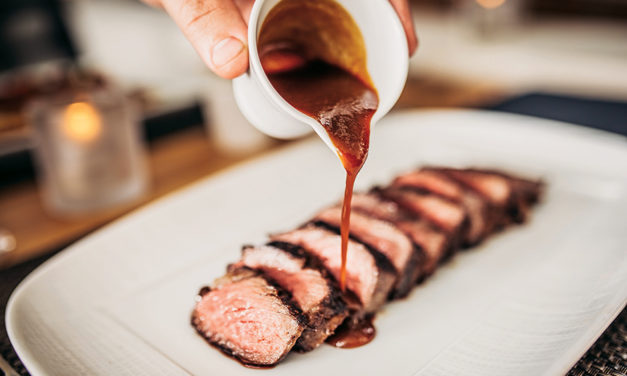
Leave a Reply